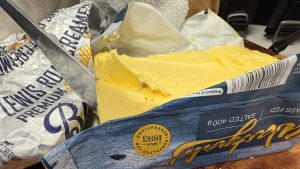
In the article, Keith Cameron and Hong Di showed that adding iron sulphate to the water used to clean dairy sheds had many beneficial effects.
After treatment, E coli levels were about 90% lower. Phosphorus (in various forms) was also reduced by about 90%. Later developments showed that methane produced by effluent ponds was also greatly reduced.
The research had already caught the attention of Ravensdown, the fertiliser co-operative, which helped fund it. The scientific community took notice as well. Di and Cameron were awarded the Royal Society’s 2021 Pickering Medal for “innovative technological work with significant benefits or commercial success”.
So when offered the chance to see the technology in action, I was keen.
This was especially the case because the pilot farm is between Lincoln and Te Waihora-Lake Ellesmere in Canterbury, one of the most intensively farmed catchments in the country.
Te Waihora’s water quality is considered “supertrophic” – that is, saturated in phosphorus and nitrogen, according to Land, Air, Water Aotearoa (Lawa). It’s the worst rating possible.
It’s also a culturally sensitive area due to the mahinga kai values of the lake and waterways.
If any farming region needs improvements, it’s this one – a point conceded by farmer Tony Dodunski.
He’s 35 and wants to be in the “innovative space”. Dairy farmers get “hammered” on social media, and he worries about losing the social licence to operate.
“You can’t just work, you need a purpose,” he says.

He manages 650 dairy cows on 190 hectares and supplies Fonterra. After the milking is done, the shed is washed down and the water, faeces, urine, spilt milk and detergents are collected.
This fluid is “gold” because it can be sprayed on his paddocks as a cheap, recycled fertiliser, he says.
On Dodunski’s farm, the fluid is usually piped to an effluent storage pond nearby.
This is where the iron sulphate – also used to treat human drinking water – is added by a system commercialised by Ravensdown. Called EcoPond, it’s automated and continually monitors the pond. The “clarified” water is later delivered to fields.
While developing this system, Cameron and Di stumbled across a methane reduction of greater than 90%. “This was a stunning result,” Di says. “In science, it’s rare to achieve such a large influence in an experiment.” Later improvements boosted that to 99%.
On dairy farms, most methane comes from burping cows. Effluent ponds are the second-largest contributor.
Methane is an important greenhouse gas and farmers are expected to cut their biogenic methane emissions by 10% by 2030.
On an average farm, EcoPond reduces total methane production by about 5%, half of the goal in one step, says Carl Ahlfeld, the EcoPond product manager for Ravensdown.
The farming sector has many problems. Nitrate levels are way too high (Dodunski says nitrates aren’t a problem on his farm); Ravensdown gets grief for importing phosphates from Western Sahara; Greenpeace demands New Zealand “halve the industrial dairy herd by phasing out synthetic nitrogen fertiliser and imported feed”.
EcoPond is one of the sector’s answers: Evidence-led incremental change.
Will it be enough? I don’t know.

























